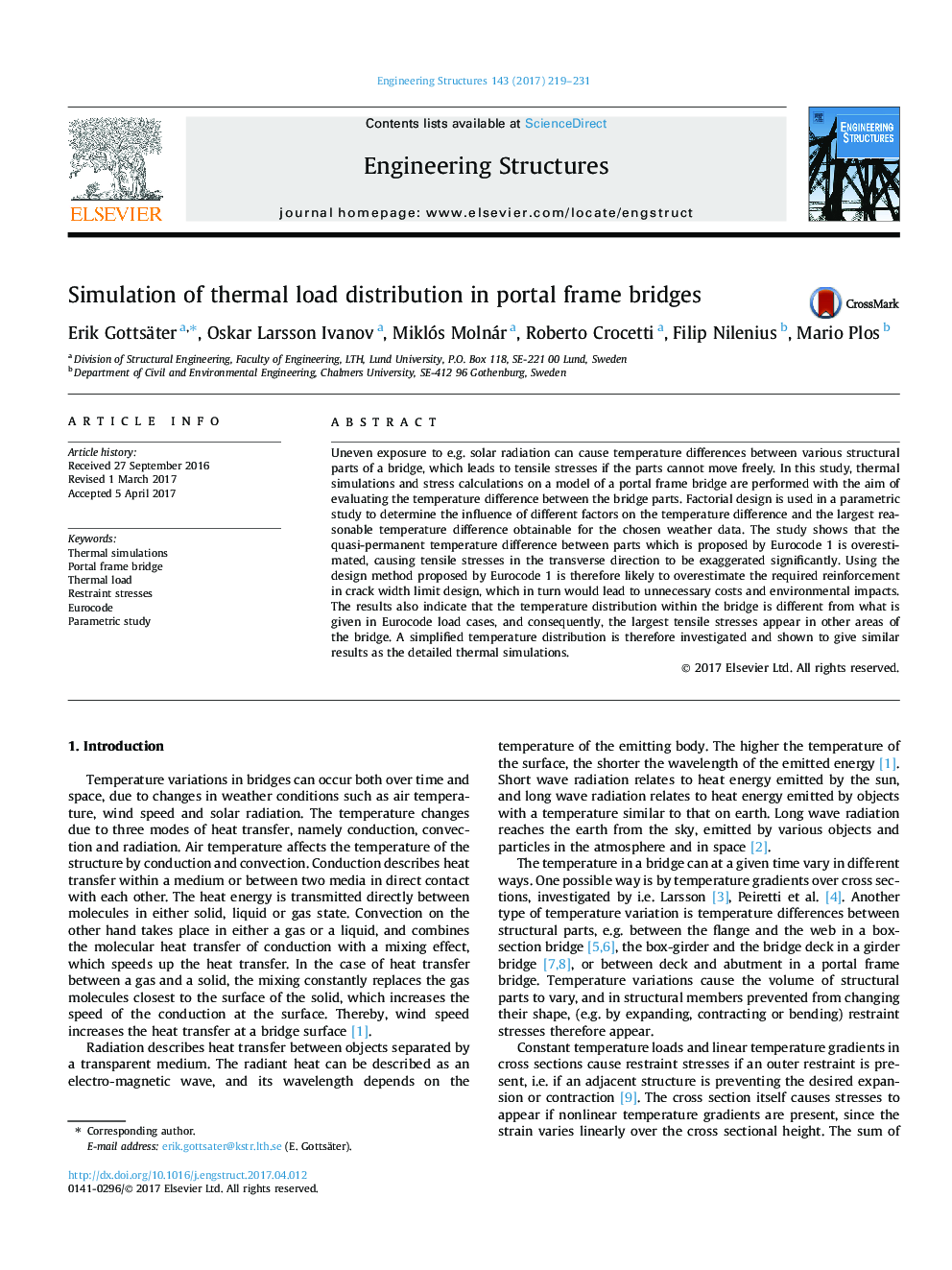| Article ID | Journal | Published Year | Pages | File Type |
|---|---|---|---|---|
| 4920066 | Engineering Structures | 2017 | 13 Pages |
Abstract
Uneven exposure to e.g. solar radiation can cause temperature differences between various structural parts of a bridge, which leads to tensile stresses if the parts cannot move freely. In this study, thermal simulations and stress calculations on a model of a portal frame bridge are performed with the aim of evaluating the temperature difference between the bridge parts. Factorial design is used in a parametric study to determine the influence of different factors on the temperature difference and the largest reasonable temperature difference obtainable for the chosen weather data. The study shows that the quasi-permanent temperature difference between parts which is proposed by Eurocode 1 is overestimated, causing tensile stresses in the transverse direction to be exaggerated significantly. Using the design method proposed by Eurocode 1 is therefore likely to overestimate the required reinforcement in crack width limit design, which in turn would lead to unnecessary costs and environmental impacts. The results also indicate that the temperature distribution within the bridge is different from what is given in Eurocode load cases, and consequently, the largest tensile stresses appear in other areas of the bridge. A simplified temperature distribution is therefore investigated and shown to give similar results as the detailed thermal simulations.
Related Topics
Physical Sciences and Engineering
Earth and Planetary Sciences
Geotechnical Engineering and Engineering Geology
Authors
Erik Gottsäter, Oskar Larsson Ivanov, Miklós Molnár, Roberto Crocetti, Filip Nilenius, Mario Plos,
